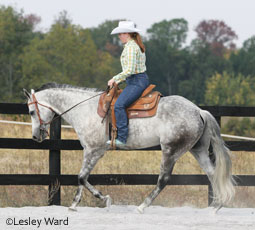
Q: My 6-year-old Quarter Horse mare is very difficult to get into a lope. She usually just goes into an extended trot. When I do get her to lope, it is very rough and hard to sit. Do you have any advice?
When all of the medical and health issues have been addressed, I like to see that a horse can canter on a longeline or in a round pen on the correct lead and in a balanced frame without the weight of the rider.
Before you ask your horse to canter or lope under saddle, you need a solid forward cue at the walk and the trot. Practice lots of upward and downward transitions. Make sure your horse is responsive to your request for an increase in speed. Go from a halt to a walk and back to the halt. If she doesn’t respond immediately, then that needs work.
I teach the forward cue from the ground first, using a kissing sound and a tap on the hip with a dressage whip. After a couple of times, you won’t need to tap with the whip. When your horse is responsive to your cue, move on to working under saddle. Your forward cue will then be to open your horse’s shoulders-—open your shoulders and chest and move your hands forward slightly—and close your legs on her sides. If she doesn’t respond, you can back it up with the whip.
Be sure to get the forward cue solid at the walk and the trot, and do a lot of transitions within the gaits: Cue your horse for a fast walk and a slow walk, a fast trot and a slow jog.
Once you have a solid forward cue, it’s all about hip control. You want to get your horse to the point where she will perform the haunches-in at the lightest touch of your leg—first at the halt, then at the walk and the trot. When she can travel along for several strides at the jog with her haunches in, it’s time to try loping her again. Be sure to break the process down into the smallest steps possible, and seek the help of a trainer if you can.
When your horse becomes responsive to your forward cue, she’ll understand when you’re asking for a transition. The haunches-in helps her get the correct canter lead. By cueing her for the haunches-in, you’ll minimize the probability of cross-cantering.
JIM McDONALD is an AQHA Professional Horseman and a CHA and Centered Riding instructor. www.traininginharmonywithhorses.com
The purpose of the Certified Horsemanship Association (CHA) is to promote excellence in safety and education for the benefit of the horse industry. The CHA certifies instructors and trail guides, accredits equestrian facilities, publishes educational manuals, produces educational horsemanship DVDs, and hosts regional and international conferences. Visit www.cha-ahse.org or call 859-259-3399. To find a certified horseback riding instructor or accredited equine facility near you, visit www.chainstructors.com.
This article originally appeared in the November 2013 issue of Horse Illustrated. Click here to subscribe.

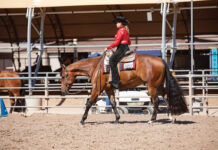
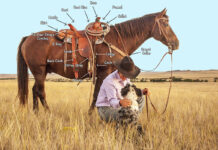
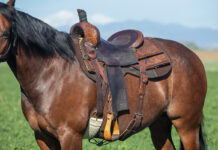
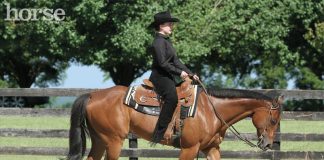

Great article! I have a horse that is really hard to get into a canter. Definitely going to be working on haunches-in with him. I have taught my other gelding to do haunches-in and it really helps get the right lead. In teaching haunches-in, you also have to get them loosened up and soft throughout their whole body which I think helps all around.
Jim McDonald gave solid advice for smoothing the lope. What he neglected to share was that after all the preliminary work is smooth, the learning to smooth the lope part could perhaps add-up to over 100 hours of loping practice. I find that riders expect a rocking horse lope after just a few trys.
Great tips.